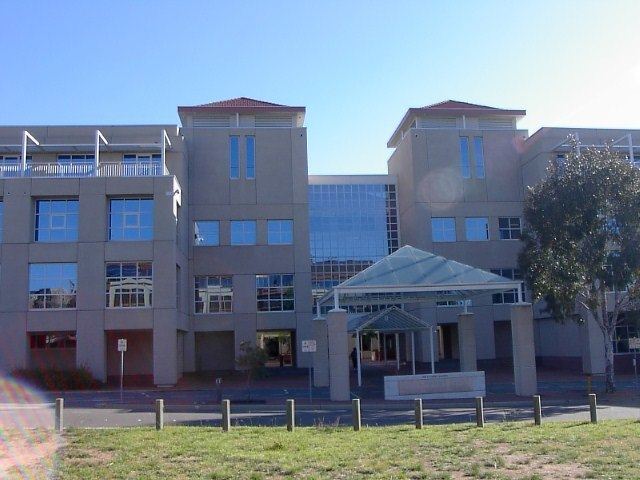Formed 24 July 1987 Founded 24 July 1987 | Phone +61 2 6261 1111 Number of employees 4,958 | |
 | ||
Preceding agencies Department of Foreign Affairs
Department of Trade (II) Jurisdiction Government of Australia Annual budget A$1.5 billion (2006/07) Ministers responsible Julie Bishop,
Minister for Foreign Affairs
Steven Ciobo,
Minister for Trade and Investment
Concetta Fierravanti-Wells,
Minister for International Development and the Pacific
Richard Colbeck,
Minister for Tourism and International Education and Minister Assisting the Minister for Trade and Investment Department executive Frances Adamson, Secretary Address R.G. Casey Building, John McEwen Cres, Canberra ACT 0211, Australia Hours Open today · 9AM–5PMTuesday9AM–5PMWednesday9AM–5PMThursday9AM–5PMFriday9AM–5PMSaturdayClosedSundayClosedMonday(Canberra Day)9AM–5PMHours might differ Motto "Advancing the interests of Australia and Australians internationally" Predecessors Department of Foreign Affairs, Department of Resources, Energy and Tourism Similar Embassy of the People's, British High Commissi Canberra, New Zealand High Co, South African High Co, Embassy of the United States of Profiles | ||
The Australian Department of Foreign Affairs and Trade (also called DFAT) is a department of the Government of Australia charged with the responsibility of advancing the interests of Australia and its citizens internationally. It manages the government's foreign relations and trade policies.
Contents
The head of the department is the Secretary of the Department of Foreign Affairs and Trade, presently Frances Adamson, who reports to the Minister for Foreign Affairs, presently the Hon. Julie Bishop MP, the Minister for Trade and Investment, presently the Hon. Steven Ciobo MP, the Minister for International Development and the Pacific, presently Senator the Hon. Concetta Fierravanti-Wells, and the Minister for Tourism and International Education and the Minister Assisting the Minister for Trade and Investment, presently Senator the Hon. Richard Colbeck supports the administration of the department.
History
The department finds its origins in two of the seven original Commonwealth Departments established following Federation: the Department of Trade and Customs and the Department of External Affairs, headed by Harry Wollaston and Atlee Hunt respectively.
The department was abolished on 14 November 1916 and its responsibilities were undertaken by the Prime Minister's Department and the Department of Home and Territories. It was re-established on 21 December 1921.
Until the Second World War, Australia's status as a dominion of the British Empire in the then British Commonwealth meant its foreign relations were mostly defined by the United Kingdom. During this time, Australia's overseas activities were predominantly related to trade and commercial interests, while its external affairs were concerned mostly with immigration, exploration and publicity. The political and economic changes wrought by the Great Depression and Second World War, and the adoption of the 1931 Statute of Westminster, necessitated the establishment and expansion of Australian representation overseas, independent of the British Foreign Office. Australia began to establish its first overseas missions (outside London) in 1940, beginning with Washington, D.C., and now has a network of over 80 diplomatic (and 22 trade) posts.
The Department of External Affairs was renamed the Department of Foreign Affairs in 1970, On 24 July 1987, the Department of Foreign Affairs and the Department of Trade were amalgamated by the Hawke Labor Government to form the Department of Foreign Affairs and Trade.
In 2005, DFAT became embroiled in the Oil-for-Food Programme scandal after it was revealed it had approved the Australian Wheat Board's (AWB) request allowing it to pay 'trucking charges' to Alia, a Jordanian trucking company with no actual involvement in the trucking of Australian wheat within Iraq. The Cole Inquiry into the AWB was established, however its terms of reference excluded any investigation of the role of DFAT.
Objectives
The department has six key goals, as stated on its website:
Operational activities
The functions of the department are broadly classified into the following matters as laid out in an Administrative Arrangements Order issued on 18 September 2013:
Structure
The department is responsible to the Minister for Foreign Affairs and the Minister for Trade and Investment; currently Julie Bishop and Andrew Robb, respectively. The Minister for Foreign Affairs is also assisted by a Parliamentary Secretary.
The department has a staff of around 3,300 employees, of which 1,300 are foreign staff employed by missions directly, and 1,500 are Australian employees based in Australia, and some 500 are diplomats serving overseas.
Department Secretary
DFAT is administered by a senior executive, comprising a secretary and five deputy secretaries. On the recommendation of the Prime Minister, the Governor-General has appointed the following individuals as Secretary to the department:
Offices
The department maintains offices in each state and mainland territory to provide consular and passport services, and to perform an important liaison service for business throughout Australia. In addition, it has a Torres Strait Treaty Liaison Office on Thursday Island. Additionally, the department manages a network of over 90 overseas posts, including Australian embassies, high commissions, consulates-general and consulates.
DFAT also manages several agencies within its portfolio, including:
DFAT also manages foundations, councils and institutes including:
